It’s easy to get mesmerized by the stars’ incredible twinkle or the moon’s white glow looking up at the night sky. However, our galaxy is more than what we can see with our own eyes. The solar system has millions of stars, planets, and cosmic bodies that provide a never-ending sense of wonder and amazement.
Many of these celestial bodies also give off their own unique color and characteristics. Take the Milky Way Galaxy, for example. Not only does it contain Earth, but it also has seven other planets vastly different from one another.
In the following passages, we will explore these planetary bodies and what makes up their beautiful colors.
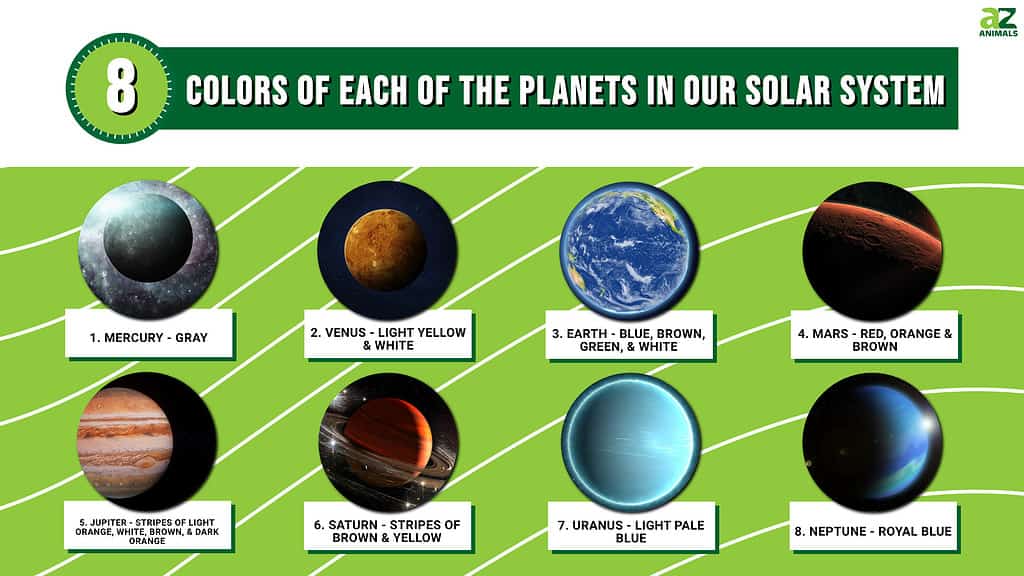
What Gives a Planet Its Color?
Before we uncover the colors of the planets, it’s essential to take a step back and look at what gives the worlds their unique hues and complexion.
Generally, two factors impact the color of a planet — its composition and its ability to reflect or absorb sunlight. Depending on the type of atmosphere a planet has, the celestial body’s color could reflect its surface color.
Other planets with heavy atmospheres will have colors that reflect the amount of light leaving and entering, causing different effects on their overall appearance.
1. Mercury
Color: Gray
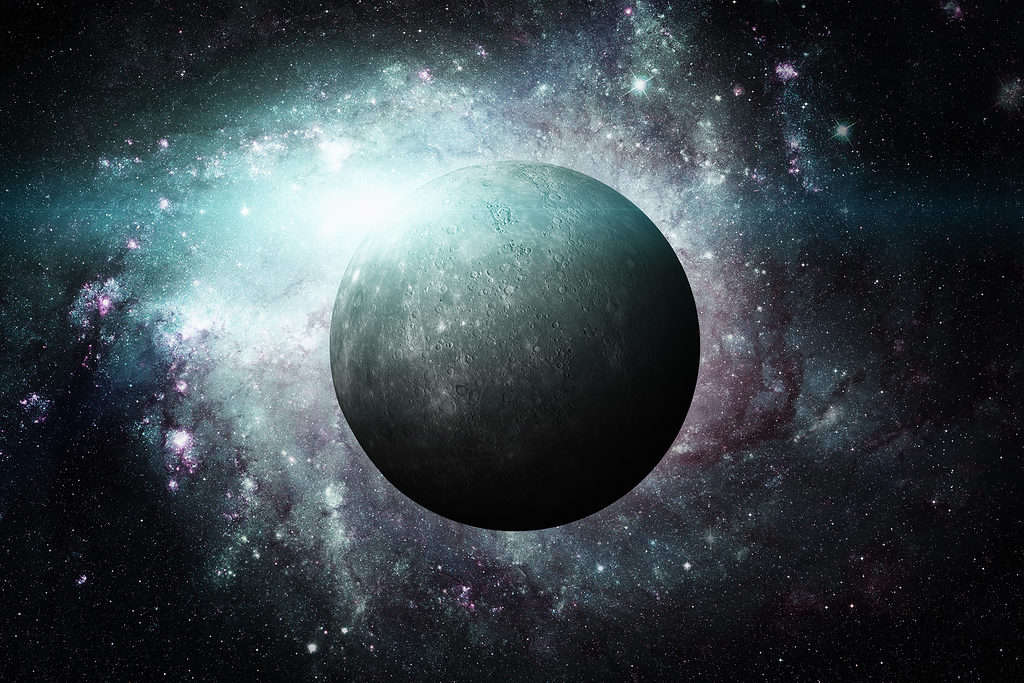
Mercury is the closest planet to the sun in the Solar System and has a dark gray color.
©NASA images/Shutterstock.com
Reason for the Color
As the closest planet to the sun and one of the smallest, Mercury’s dark gray, ashen color isn’t the liveliest, but it makes sense. The planet has one of the highest iron contents in our solar system and a minimal atmosphere. Since there isn’t anything to block the view of the surface of Mercury, the planet gives off a perfect gray hue.
There are many theories scientists have for why the planet lacks any pops of color, but the main one seems to be that much of the original planet’s crust disintegrated during the early days of the world’s creation.
2. Venus
Color: Light Yellow and White
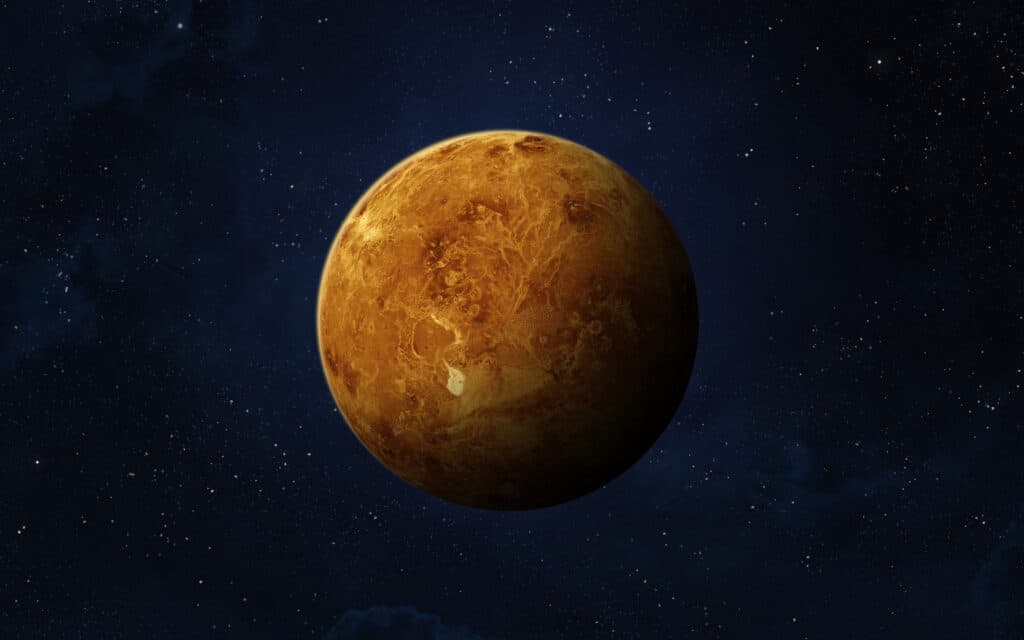
The planet Venus is mostly a pearly white planet with a yellow tint encompassing the entire world.
©iStock.com/buradaki
Reason for the Color
Venus‘ colors are a little more picturesque than Mercurys. However, much of what’s seen through an optical telescope is a pearly white planet with a minor yellow tint. Many scientists believe that sulfuric acid clouds surrounding Venus reflect sunlight, creating the planet’s color.
However, there are only theories currently as to what causes the yellow tinge of the planet. Several missions planned to launch within the next decade will explore the world further and hopefully better understand what the planet’s surface truly looks like.
3. Earth
Color: Blue, Brown, Green, and White
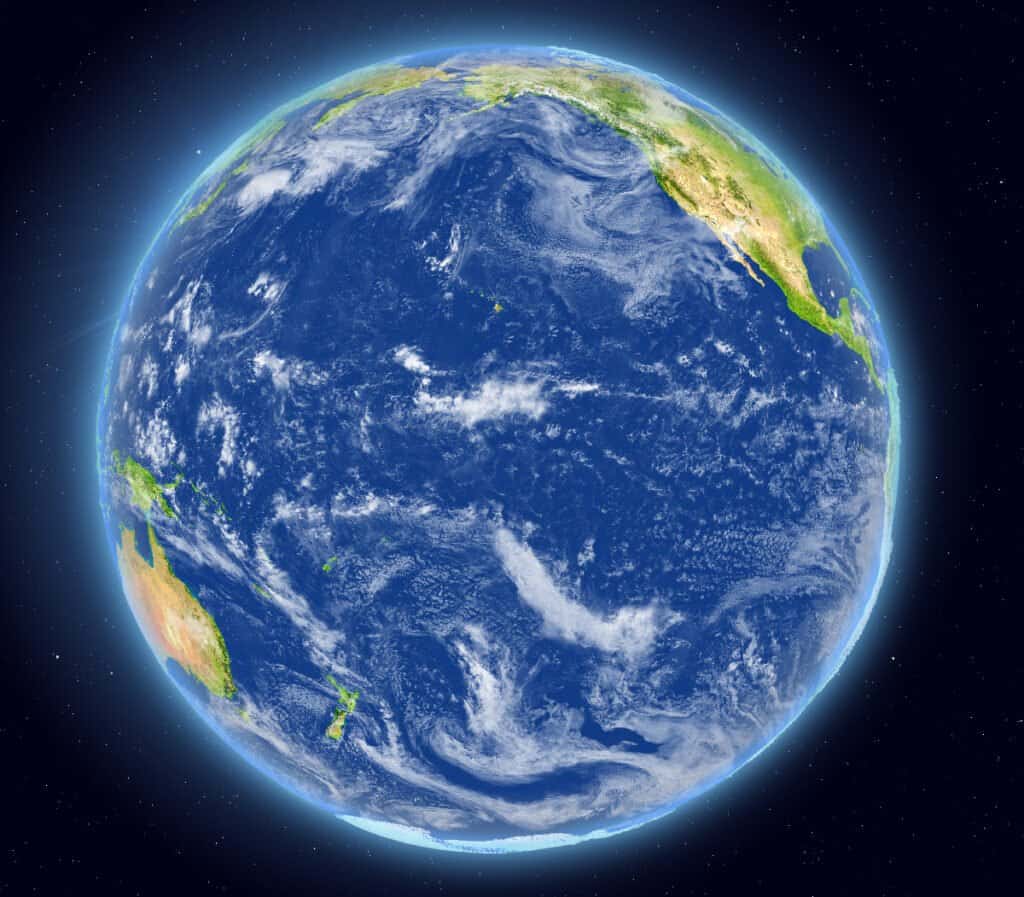
The Earth is the only planet covered mostly in water, which gives its signature blue tone and color.
©Harvepino/Shutterstock.com
Reason for the Color
Unlike other planets in the Milky Way Galaxy, Earth is mostly covered in water, which accounts for the planet’s colors. From space, it’s easy to see the world is primarily blue, with pops of green and brown throughout the globe. The interesting thing about Earth is that the further you get away from the planet, the more the color changes.
For instance, if you were to look at Earth from Uranus or Neptune, all you would see is a solid blue planet, and the other colors would vanish. However, astronauts who visit the space station say it’s possible to make out significant landforms during the day and see lights from the most prominent cities at night.
4. Mars
Color: Red, Orange, and Brown

Mars is one of the most recognizable planets in our solar system, with its signature orange and red colors.
©iStock.com/Elen11
Reason for the Color
Besides the Earth, Mars is the most recognizable planet in our solar system. While many people immediately associate the planet with the color red, the truth is that it’s more orange and brown.
Most of the color on Mars can be associated with the dust that covers the entire planet. Since the dust has a high iron content, it has rusted over time and caused a brownish hue to form on the world’s surface.
Mars’ color is also known to change occasionally, depending on whether the planet is experiencing a dust storm. The more dust that’s kicked up, the more orange the planet tends to look.
5. Jupiter
Color: Stripes of Light Orange, White, Brown, and Dark Orange
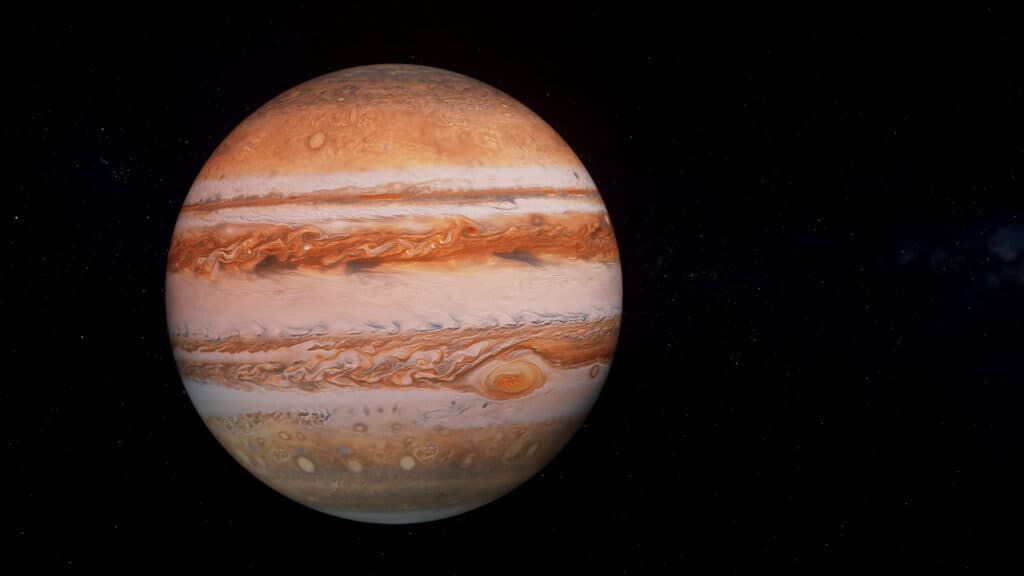
Jupiter is one of the gas giant planets and has stripes of orange, white, and brown created by the storms whipping across the world.
©iStock.com/Cobalt88
Reason for the Color
Jupiter is the fifth planet from the sun and marks the first of the gas giants in our solar system. These worlds have two primary characteristics — their lack of solid surfaces and an exterior atmosphere containing various gasses.
Since Jupiter has no crust or surface, the colors and stripes of light orange, white, and brown that we see are created by the planet’s outermost layers of its atmosphere. Scientists believe that the stripe patterns are storms and clouds whipping across the world’s core at speeds of over 400 mph.
The rest of the planet’s color results from the reflection of the sun’s rays bouncing off the hydrogen and helium atoms throughout the atmosphere.
6. Saturn
Color: Stripes of Brown and Yellow

Saturn is famous for its yellow and brown rings made from dust, rocks, and ice that orbit around the planet.
©iStock.com/Elen11
Reason for the Color
Like other gas giants, Saturn is another planet that gets its color from the clouds swirling around in the atmosphere. The clouds and storms that make up the planet’s outer layer are composed of hydrogen, helium, ammonia, and phosphine that produce the brown and yellow hues we see on Earth.
One of the most noticeable differences between Saturn and many other planets in our solar system is the world’s rings. These yellow and brown rings are actually made from several elements, including dust, rocks, and ice.
7. Uranus
Color: Light Pale Blue

The ice characteristics don’t give Uranus its color; rather, the methane floating through the atmosphere does.
©iStock.com/IncrediVFX
Reason for the Color
While Jupiter and Saturn are gas giants, Uranus and Neptune are different types of giant planets classified as ice giants. Even though the world doesn’t have a solid crust that you could stand on, there is a thin layer of liquid ice made of ice water, methane, and ammonia.
Surprisingly, the “ice” characteristics don’t give Uranus its color. Instead, it’s the methane floating through the atmosphere. This gas produces a light pale blue and sometimes green tinge when the sunlight passes through it.
8. Neptune
Color: Primarily Royal Blue with Other Shades of Blue
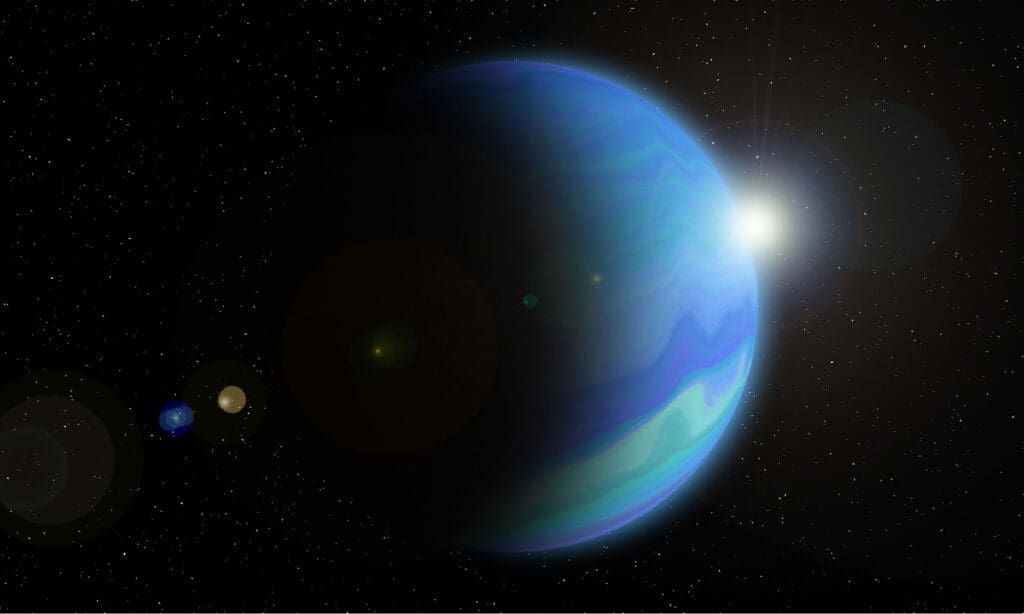
Neptune is the furthest planet from the sun and has a deep royal blue color across the world.
©iStock.com/suman bhaumik
Reason for the Color
Neptune is the last of the giants in our solar system and marks the furthest planet away from the sun. Since the world doesn’t receive much sunlight, it also has a frozen layer of ice around its core, similar to Uranus. However, much like its fellow ice giant, the color of Neptune doesn’t come from its ice layer.
In fact, the deep royal blue color of the planet is a direct result of methane clouds in the outermost atmospheric layer mixing with white clouds from the middle layer. The combination of these two sections creates the ice giant’s iconic look.
Do Planets in Other Solar Systems Look Like Ours?
From what scientists have seen, the answer is hard to say. Most planets discovered outside our solar system are either too far away to get a clear picture or are gas giants with few distinguishing features. As space travel continues to improve, we’ll learn more about these exoplanets in the future.
Summary of the Colors of Each of the 8 Planets in Our Solar System
| Rank | Planet | Color |
|---|---|---|
| 1 | Mercury | Gray |
| 2 | Venus | Light Yellow & White |
| 3 | Earth | Blue, Brown, Green, & White |
| 4 | Mars | Red, Orange & Brown |
| 5 | Jupiter | Stripes of Light Orange, White, Brown, & Dark Orange |
| 6 | Saturn | Stripes of Brown and Yellow |
| 7 | Uranus | Light Pale Blue |
| 8 | Neptune | Primarily Royal Blue with Other Shades of Blue |
The photo featured at the top of this post is © iStock.com/buradaki
Thank you for reading! Have some feedback for us? Contact the AZ Animals editorial team.







